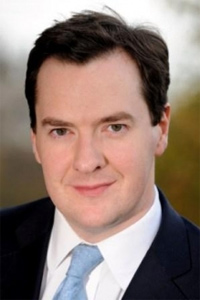Investing
Autumn Statement 2013: what to expect

On Thursday George Osborne will use his annual Autumn Statement to provide an update on the government’s economic plans.
As usual there has been plenty of speculation about the measures the Chancellor will announce.
Here are eight predictions from the experts at accountancy firm, Baker Tilly.
Cap on Individual Savings Accounts (ISAs)
A cap may be introduced to limit lifetime ISA investment. A figure of £100,000 has been suggested by Whitehall officials but we consider this to be too low as it would exceed the amount already invested by serial ISA investors.
Any cap would affect individuals wishing to use a tax favoured savings vehicle to make substantial savings over a long period. A cap of £100,000 would affect those who have made maximum contributions to ISAs who will have already invested in the region of £130,000.
ISAs are a legitimate tax favoured product used by millions of individual taxpayers. Many ordinary investors, who have invested up to the existing annual limits, could be affected by a cap which could effectively be retrospective if it is set too low.
Cap on tax-free pension lump sum
A cap may be introduced to limit the lump sum that can be paid tax free at age 55. The existing 25% limit might be retained if it results in a lump sum of less than the cap. A cap of £36,000 was suggested in a Pensions Policy Institute (PPI) report in July.
Pension investors will be affected if they would have received a lump sum above the capped amount. This will be a blow to those who have been relying upon a larger sum, for example, to kick start their early retirement, fund another venture or pay off debt.
Restriction on multiple trusts for IHT planning
At present, an individual can create an unlimited number of trusts. In some circumstances, more than one IHT nil rate band (£325,000) can be utilised to reduce IHT liability.
A restriction on the use of multiple trusts (including pilot trusts) is likely to be introduced. Only one nil rate band will be available split across all trusts created by the same settlor.
This would affect individual settlors, their families, other beneficiaries and trustees. It would also have retrospective effect as it would affect existing trusts and related individuals.
Personal tax allowance increase
The individual personal tax allowance is already set to increase from £9,440 to £10,000 from 6 April 2014.
But the Lib Dems want to announce an increase in this allowance, to £10,500, with effect from 6 April 2015.
The Conservatives and Lib Dems are expected to have a May 2015 election pledge to increase this allowance to £12,500 so an April 2015 increase to move towards this is likely for more than just inflationary reasons.
Any increase in the personal tax allowance will benefit individual income tax payers and trustees entitled to the allowance.
Transfer of tax allowances between couples
At present, any unused element of an individual’s personal tax allowance is wasted and cannot be transferred.
It is predicted that up to £1,000 of an individual’s personal tax allowance will be transferable between married couples and civil partners with effect from 6 April 2015 where the individual in the couple with the highest income is a basic rate taxpayer.
It has already been announced by David Cameron that this will be included in the Autumn Statement.
Those who are married, or who are in civil partnerships, where the highest income tax payer pays tax at the basic rate will be affected.
Mansion Tax extension
The government could reduce the qualifying threshold from £2m to £1m or even reduce the threshold for particular areas. It could also extend the charge to properties owned by non-residents.
Further revenue streams are required to meet public expenditure demands and this is likely to be less politically sensitive than many other options.
The tax is relatively cheap to collect and would be extremely difficult to avoid. However, the property wealth is, arguably, a major component of the ‘feel-good’ factor and the adverse consequences of an insensitively imposed change could be high.
Simplified VAT code
The VAT system is littered with disparities and, if recent Budgets are anything to go by, we may see some future VAT hikes in the name of ‘simplicity’.
HMRC has addressed other ‘borderline anomalies’ within the VAT system; who can forget ‘pasty tax’ and ‘the caravan tax’. There are however a number of other VAT anomalies that haven’t been addressed but could be in the name of simplifying the VAT code. For example: child car seats and pushchairs and bicycle helmets and bicycles.
If addressing anomalies such as ‘pasty tax’, ‘granny flats’, ‘holiday caravans’ and ‘storage facilities was to ‘simplify’ VAT, there are a lot more anomalies which could be addressed to simplify VAT even further.
Unfortunately, as the UK cannot extend the VAT zero-rate to any further goods or services, the likelihood is that in addressing any VAT anomalies, the impact is likely to be in higher VAT costs for consumers.
New social investment tax relief
Draft legislation will be published for new tax relief aimed at encouraging individuals to invest in social enterprises. The relief will:
• allow income tax relief for investment into qualifying social enterprises;
• allow social enterprises to receive up to £150,000 in investment through the scheme in any 3 year period;
• offer relief on investment instruments other than equity;
• allow investment in Community Interest Companies, community benefit societies and charities; and
• allow investment via a nominee.
The final legislation will be included in next year’s Finance Bill.
This will affect individuals (particularly high net worth individuals) looking to invest in social enterprises and qualifying organisations looking to raise capital.
Keep up-to-date with all the breaking news and reaction from the Autumn Statement at www.YourMoney.com or follow us on Twitter @YourmoneyUK